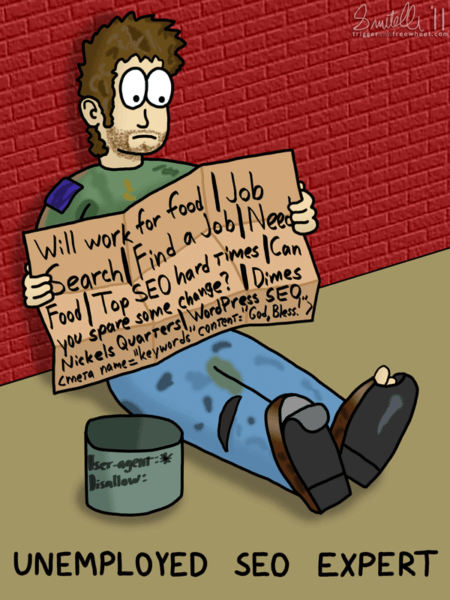
I’m so tired of hearing various pundits say that SEO is dead. Maybe they are merely being provocative. Perhaps they need to fill seats in their event, and so they come up with “bait” session titles like “Why SEO is fundamentally DEAD.” (Yes, that was actually a keynote title at a very popular conference last year.) Or maybe they drank their own Kool-Aid and really believe this nonsense.
While SEO is NOT dead, the way that you’re doing it might be. Does the following describe your approach? You’ve optimized your H1s and meta tags and you’ve built a few (hopefully white hat) links. Now you just sit back and watch your site rise to the top of Google, right?
Wrong. This sort of cookie-cutter approach to SEO — one that equates SEO to tuning a guitar or to following the steps to a pumpkin pie recipe — rarely works in today’s search landscape.
Traditional SEO is dead
It’s human to want a repeatable formula to achieve a goal. The bad news is that there is no precise formula to SEO anymore. Sure, there are best practices, and a skilled SEO practitioner can greatly increase the chances of a good outcome. But we live in a world that comes with no guarantees — especially where SEO is concerned.
Of course, there have never really been any absolute guarantees when it comes to SEO. You should run away screaming from any SEO practitioner who promises one.
But for years, many operated under the illusion that if we just tweaked our title tags a little more and got just one more link, we would be rewarded with a higher ranking.
So if we aren’t able to predict an outcome from our optimization efforts, do I agree with those pundits who say that SEO must be dead?
In a way, yes. SEO in the traditional sense is dead. Outsmarting the search engines will no longer be feasible for most. But SEO does still exist, just in an evolved form.
To understand what SEO is today, let’s look at how we got here.
[Read the full article on Search Engine Land.]
Some opinions expressed in this article may be those of a guest author and not necessarily Marketing Land. Staff authors are listed here.


